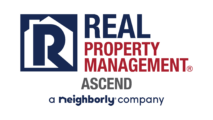 Controlling a multi-family property provides significant tax benefits, but numerous investors overlook one powerful strategy—cost segregation. This tax strategy enables property owners to accelerate depreciation on specific building components, generating substantial tax savings during the initial ownership phase.
Controlling a multi-family property provides significant tax benefits, but numerous investors overlook one powerful strategy—cost segregation. This tax strategy enables property owners to accelerate depreciation on specific building components, generating substantial tax savings during the initial ownership phase.
To maximize this approach, understanding its processes, advantages, and potential hurdles is essential. Here, we’ll break down cost segregation and explain how multi-family property owners can use this powerful tax-saving tool to optimize their real estate investment.
What is Cost Segregation?
Cost segregation is a tax strategy that permits real estate investors to accelerate depreciation on certain property elements. Higher depreciation leads to enhanced tax deductions and notable savings.
Instead of depreciating an entire building over 27.5 years for residential rental properties (or 39 years for commercial properties), cost segregation pinpoints assets within the property—like lighting, flooring, HVAC systems, or exterior features—that can depreciate over shorter timeframes (typically 5, 7, or 15 years). This method accelerates tax relief.
Key Benefits of Cost Segregation for Multi-Family Properties
Property owners can claim significant tax deductions earlier in the property’s lifecycle, enhancing cash flow and reducing tax obligations. This can benefit multi-family property owners who require funds for improvements or repairs to the property.
With more cash on hand, investors can explore further opportunities or enhancements, driving higher property values, elevated rental rates, and optimized profitability across the property’s lifespan. These financial benefits position cost segregation as a critical tool.
How to Get Started with Cost Segregation
Conducting a cost segregation study marks the first step in implementing a cost segregation tax strategy. This detailed analysis typically completed by tax and engineering professionals identifies and reclassifies systems and components of a property that qualify for accelerated depreciation.
Collaborating with a tax professional is vital. Engage a tax professional offering financial planning advice for multi-family property owners or a financial planner who works closely with your CPA to ensure you’re expertly guided through the process. Accurate execution ensures optimal outcomes.
When Should Property Owners Consider a Cost Segregation Study?
A cost segregation study can be beneficial in specific situations, delivering significant tax savings for the appropriate property owner. Ideal times include:
- After Purchasing a Property: If you’ve recently acquired a multi-family property, conducting a study early ensures you take full advantage of accelerated depreciation.
- Following Major Renovations or New Construction: If you’ve made significant improvements to a property, a study can reclassify those upgrades for faster depreciation and increased tax savings.
- Before Filing Taxes: If you’re looking to reduce taxable income for the year, a study can identify opportunities to maximize deductions.
- For Properties Owned Within the Last Few Years: If you’ve owned a property and haven’t utilized cost segregation, you can claim missed depreciation deductions by filing a tax adjustment.
Unlocking Tax Savings with Smart Strategies
Cost segregation provides substantial financial benefits for multi-family property owners, but careful planning and preparation are essential before implementing this strategy. Working with experienced professionals guarantees IRS compliance and tailors the approach to your specific situation.
Contact your local property managers for expert support in enhancing your multi-family property’s profitability through strategic tax planning. Real Property Management Ascend offers top-notch property management services in Celina and surrounding regions. Reach us at 972-688-6255 or connect with us online today!
We are pledged to the letter and spirit of U.S. policy for the achievement of equal housing opportunity throughout the Nation. See Equal Housing Opportunity Statement for more information.


